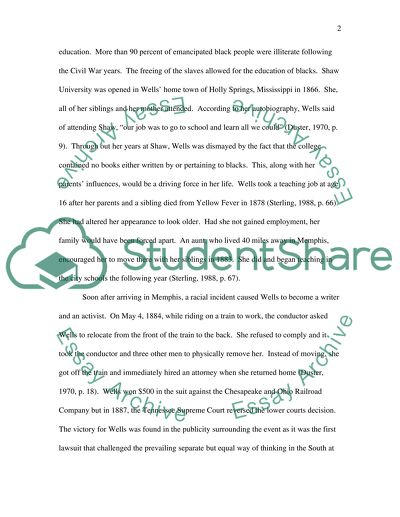Cite this document
(“Ida B. Wells As A Fighter For The Civil Rights Case Study”, n.d.)
Ida B. Wells As A Fighter For The Civil Rights Case Study. Retrieved from https://studentshare.org/sociology/1418629-synthesis-essay
Ida B. Wells As A Fighter For The Civil Rights Case Study. Retrieved from https://studentshare.org/sociology/1418629-synthesis-essay
(Ida B. Wells As A Fighter For The Civil Rights Case Study)
Ida B. Wells As A Fighter For The Civil Rights Case Study. https://studentshare.org/sociology/1418629-synthesis-essay.
Ida B. Wells As A Fighter For The Civil Rights Case Study. https://studentshare.org/sociology/1418629-synthesis-essay.
“Ida B. Wells As A Fighter For The Civil Rights Case Study”, n.d. https://studentshare.org/sociology/1418629-synthesis-essay.


